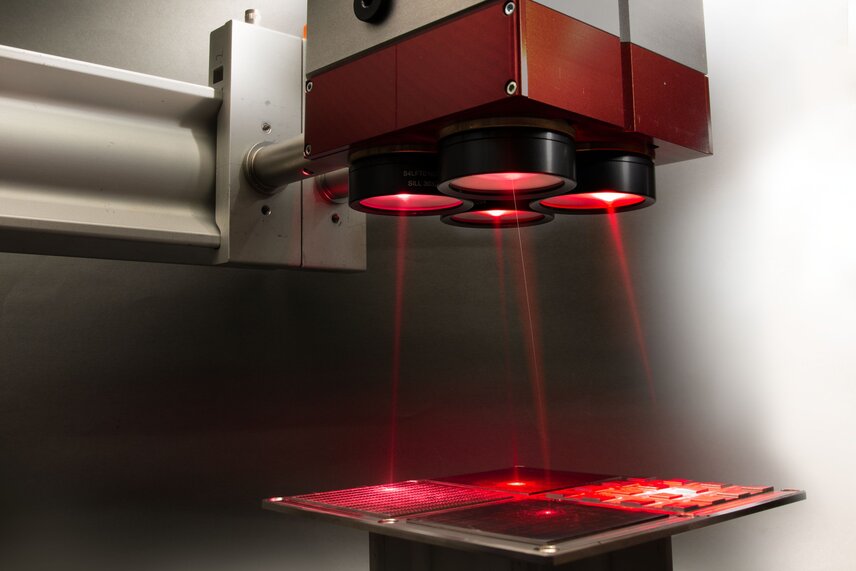
Galvanometer scanners have been in use in laser material processing for decades. However, a team from the Fraunhofer Institute for Laser Technology ILT has now developed a new, particularly compact scanner module for applications in 3D printing, micromachining or medical technology. The researchers have already successfully tested it for various applications. The scanner will be on display at LASER World of Photonics 2023 in Munich.
Smaller, lighter, more efficient and more sustainable – these are the demands placed on system developers today. A team at Fraunhofer ILT has successfully met these requirements by fusing the scanner drive and mirror substrate, resulting in significantly smaller dimensions: The planar galvanometer scanner saves up to 90 percent installation space compared to conventional systems. The particularly compact design of only 50 cm³ opens up new possibilities in a wide range of applications.
Commercially available galvanometer scanners with an aperture of 10 mm require 10 to 50 times the installation space of the planar galvanometer scanner. As this space is reduced, so is the weight of the scanner unit, an advantage that opens up a host of new applications and opportunities to increase productivity.
Thanks to the considerable reduction in space and weight, the new scanner can be integrated into applicators for hand-guided laser processes – such as medical technology applications, laser drilling or marking processes – without sacrificing precision or dynamics.
In industrial use, the mini scanner is also suitable for all hand-held laser marking and engraving systems. In addition, its compact design enables multiple scanners to be integrated into a single processing head. For this purpose, the Fraunhofer researchers have built and characterized a demonstrator with four 2D deflection units and one F-theta lens each. The scanner array has a construction volume of 140 x 140 x 90 mm³.
The researchers have successfully tested the system with laser powers of up to 150 W per scan head for laser marking and engraving applications – with comparable accuracy and dynamics to conventional galvanometer scanners. Other potential applications include 3D printing, micromachining, paint stripping and decoating. With four or more scanners, processing tasks can be parallelized; productivity increases linearly with the number of scanners.
The mini scanner uses commercially available, model-based control electronics. This allows customers to integrate it into existing machines using standardized communication protocols. This closed-loop control is more robust, precise and faster than conventional PID controllers, especially due to scanning without tracking delay. The Fraunhofer laser specialists can develop the respective systems tailored to customers’ needs.
A prototype of the mini scanner will be on display at the Fraunhofer booth A3.441 at LASER World of Photonics in Munich from June 27 to 30. Visitors will also find further exhibits at booth A1.521 at the World of Quantum, which is taking place in parallel.
Kontakt: info@ilt.fraunhofer.de
The optical industry almost completely relies on mechanical processes in its process chains. This, however, could soon change. The Fraunhofer …
Together with EPIC and W3+ Fair, the IVAM Microtechnology Network is organizing a joint booth at the new Asia Photonics …
The Fraunhofer Institute for Laser Technology ILT has developed a laser deburring process that significantly improves the quality of metal …